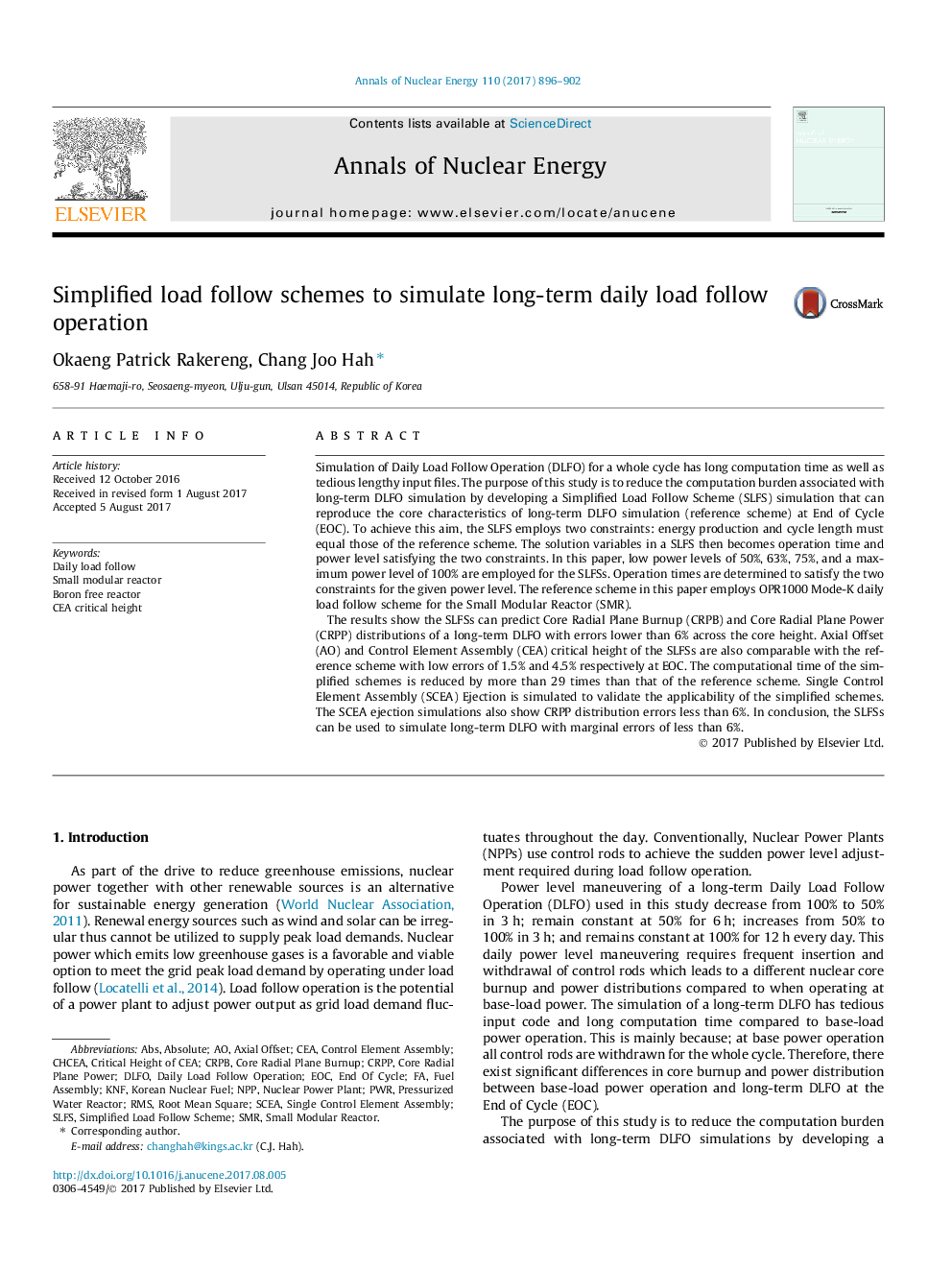| کد مقاله | کد نشریه | سال انتشار | مقاله انگلیسی | نسخه تمام متن |
|---|---|---|---|---|
| 5474986 | 1521086 | 2017 | 7 صفحه PDF | دانلود رایگان |
- Burnup and power distributions at the end of long-term daily load follow can be estimated by simplified load follow schemes.
- Constraints imposed on simplified schemes are equal energy production and equal cycle length.
- Computation time of simplified schemes is reduced by factor of 29 times at least.
- Maximum error in burnup distribution of simplified schemes is less than 16.8%.
- Maximum error in power distribution of simplified schemes is less than 17.7%.
Simulation of Daily Load Follow Operation (DLFO) for a whole cycle has long computation time as well as tedious lengthy input files. The purpose of this study is to reduce the computation burden associated with long-term DLFO simulation by developing a Simplified Load Follow Scheme (SLFS) simulation that can reproduce the core characteristics of long-term DLFO simulation (reference scheme) at End of Cycle (EOC). To achieve this aim, the SLFS employs two constraints: energy production and cycle length must equal those of the reference scheme. The solution variables in a SLFS then becomes operation time and power level satisfying the two constraints. In this paper, low power levels of 50%, 63%, 75%, and a maximum power level of 100% are employed for the SLFSs. Operation times are determined to satisfy the two constraints for the given power level. The reference scheme in this paper employs OPR1000 Mode-K daily load follow scheme for the Small Modular Reactor (SMR).The results show the SLFSs can predict Core Radial Plane Burnup (CRPB) and Core Radial Plane Power (CRPP) distributions of a long-term DLFO with errors lower than 6% across the core height. Axial Offset (AO) and Control Element Assembly (CEA) critical height of the SLFSs are also comparable with the reference scheme with low errors of 1.5% and 4.5% respectively at EOC. The computational time of the simplified schemes is reduced by more than 29 times than that of the reference scheme. Single Control Element Assembly (SCEA) Ejection is simulated to validate the applicability of the simplified schemes. The SCEA ejection simulations also show CRPP distribution errors less than 6%. In conclusion, the SLFSs can be used to simulate long-term DLFO with marginal errors of less than 6%.
Journal: Annals of Nuclear Energy - Volume 110, December 2017, Pages 896-902
